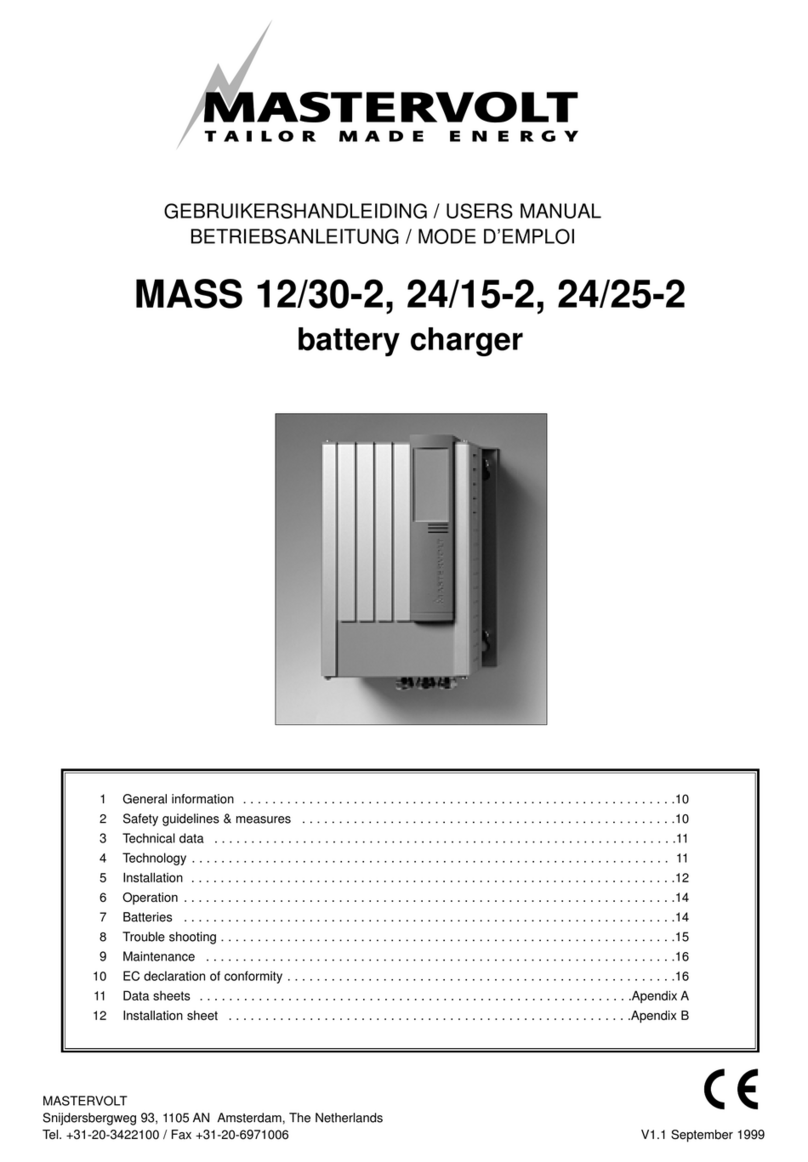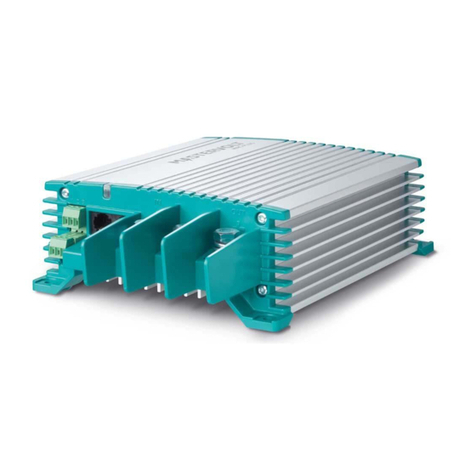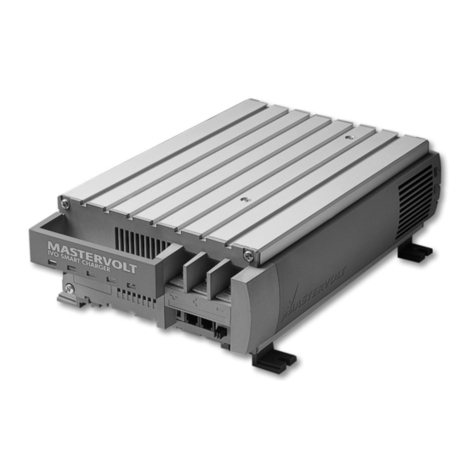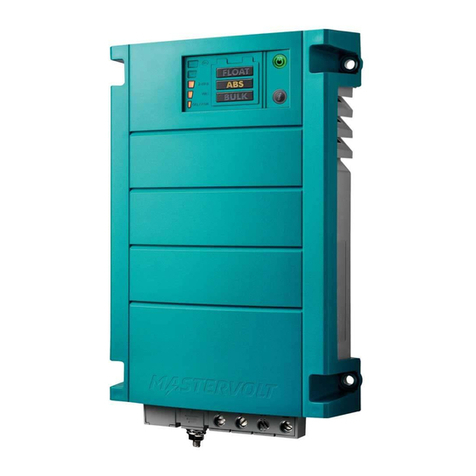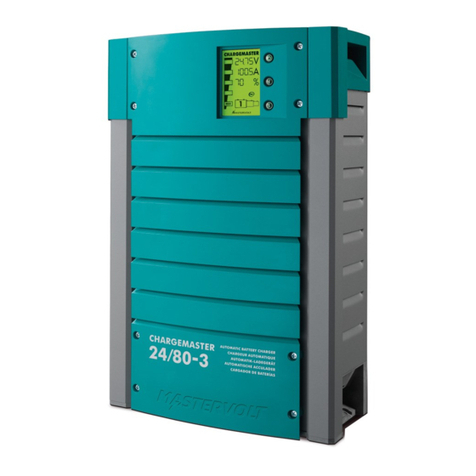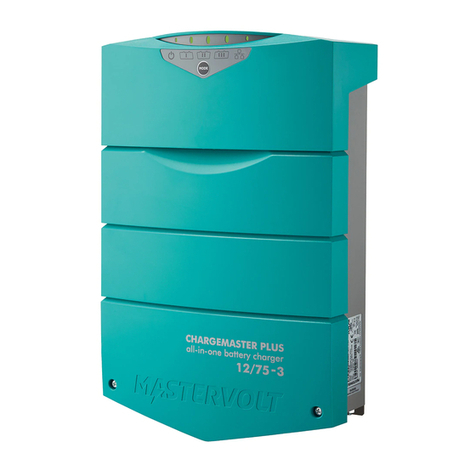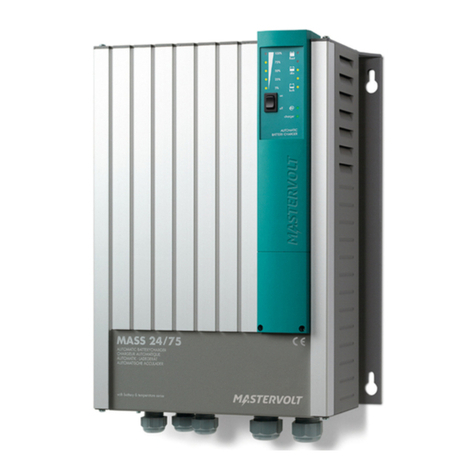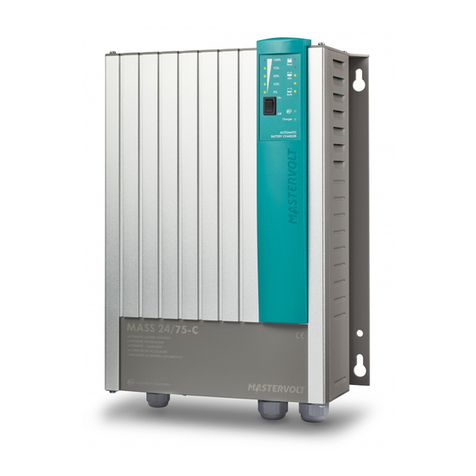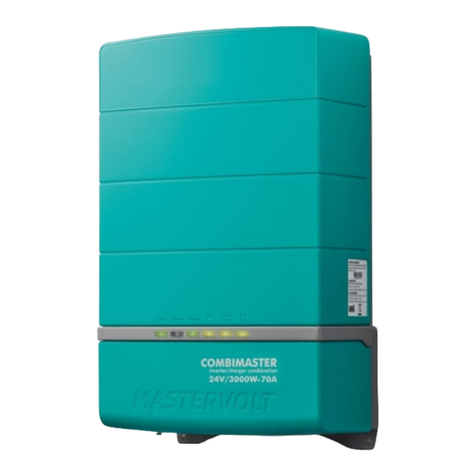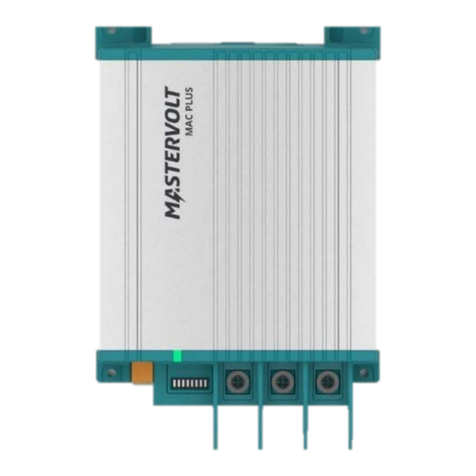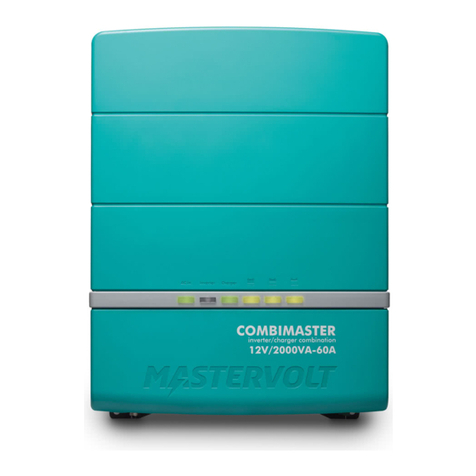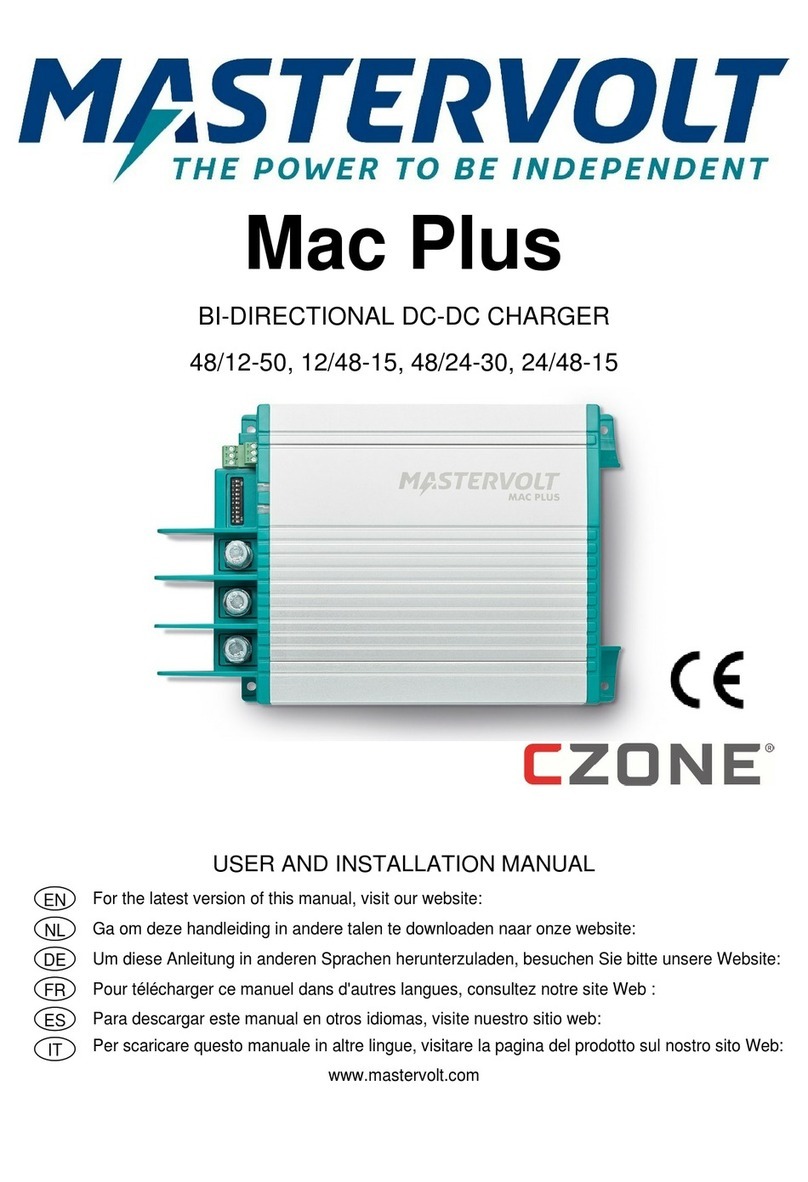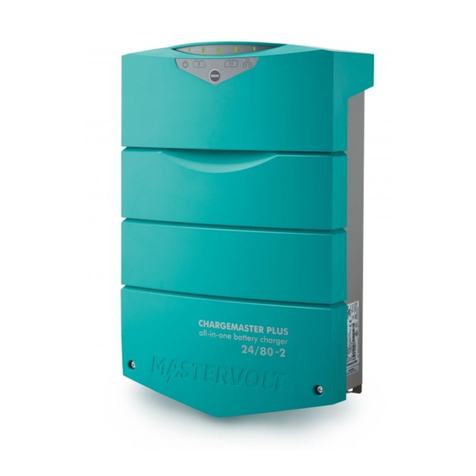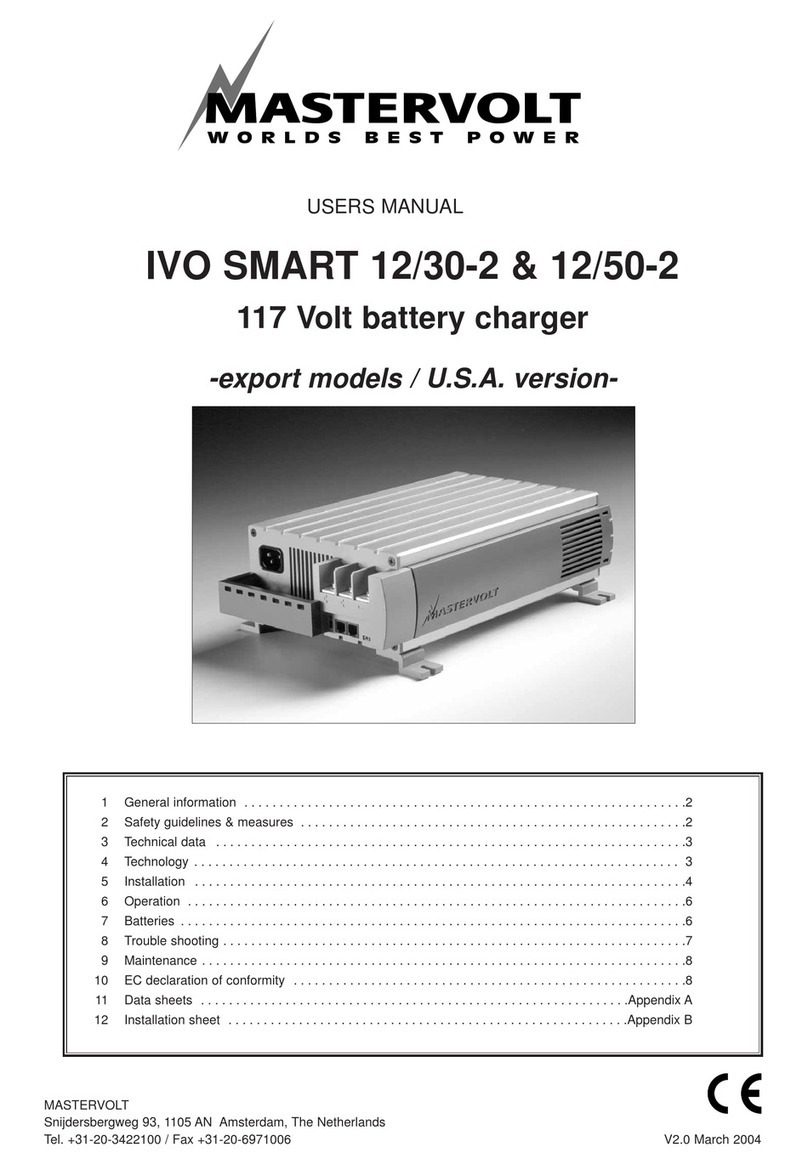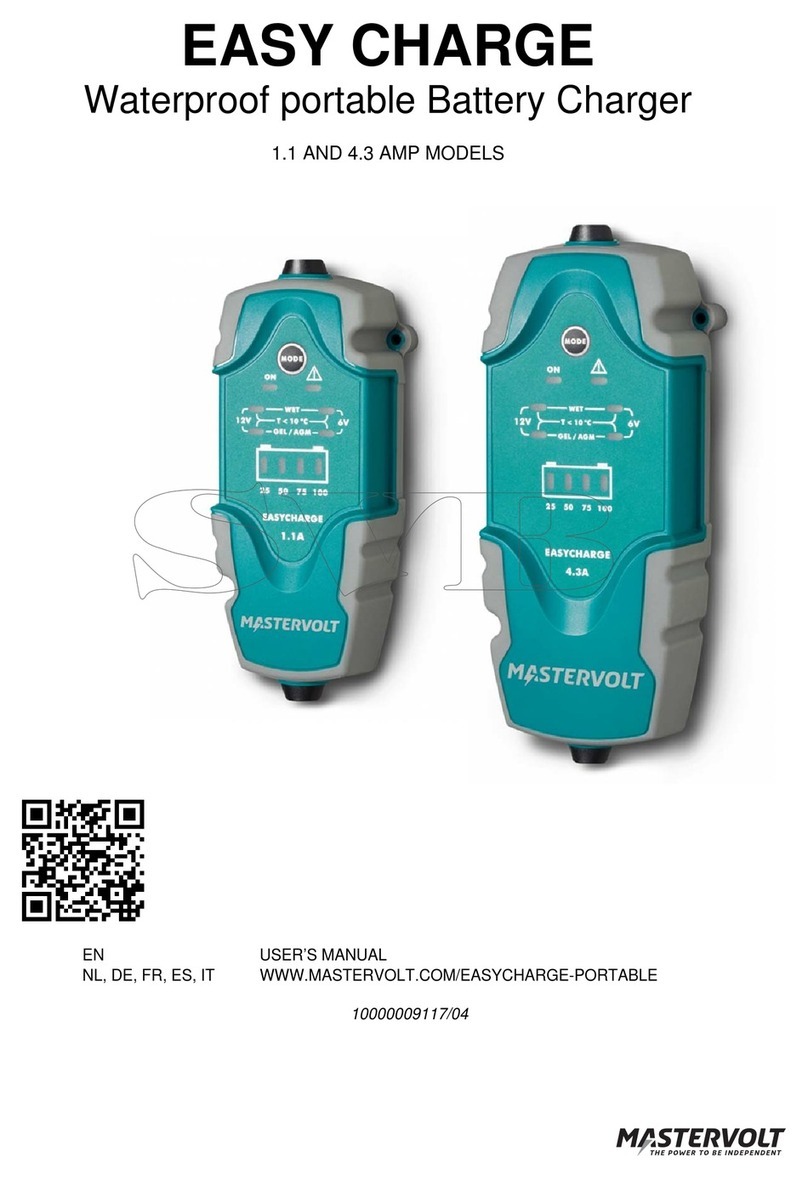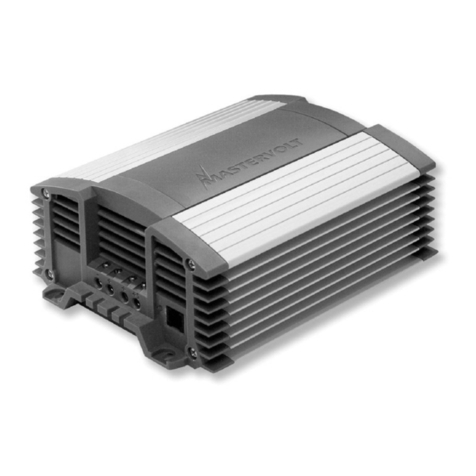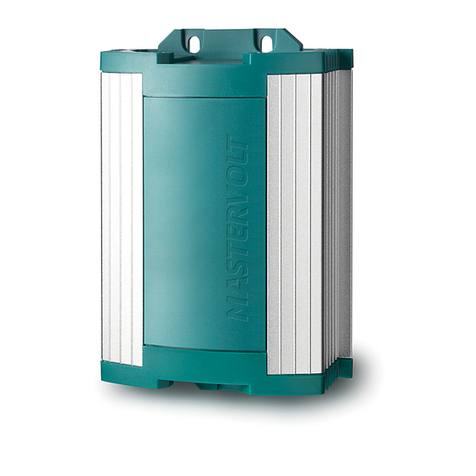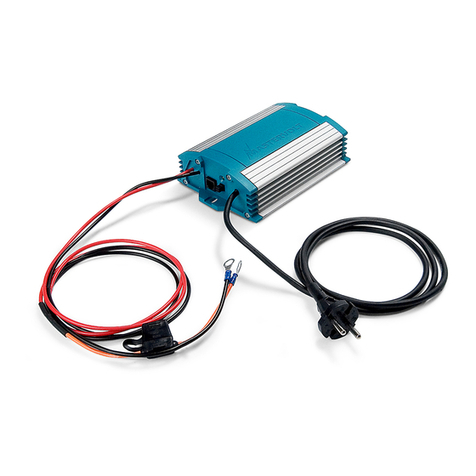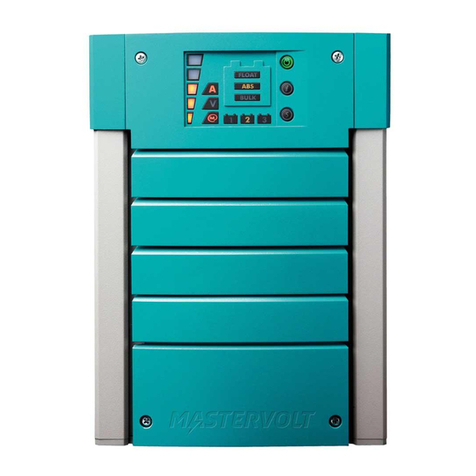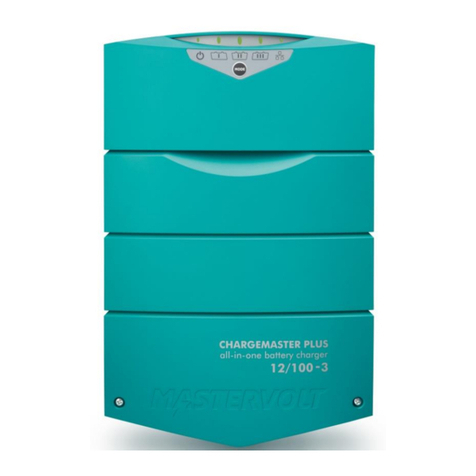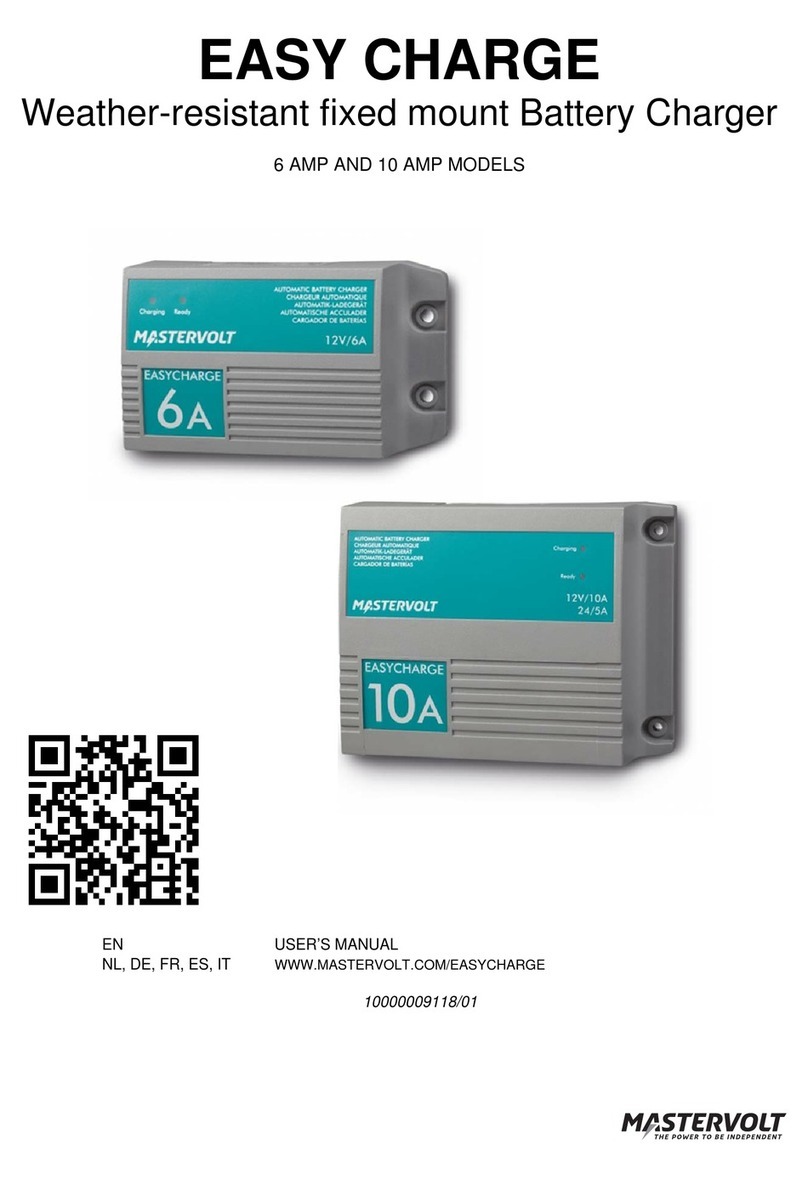2.7 When battery is installed in vehicle
A SPARK MAY CAUSE BATTERY EXPLOSION.
To reduce risk of a spark near battery:
1Position AC and DC cords to reduce risk of
damage by hood, door, or moving engine
part.
2Stay clear of fan blades, belts, pulleys, and
other parts that can cause injury to persons.
3Check polarity of battery posts. POSITIVE
(POS, P, +) battery post usually has larger
diameter than NEGATIVE (NEG, N, –) post.
4Determine which post of battery is grounded
(connected) to the chassis. If negative post is
grounded to chassis (as in most vehicles), see
(5). If positive post is grounded to the chassis,
see (6).
5For negative-grounded vehicle, connect
POSITIVE (RED) clip from battery charger to
POSITIVE (POS, P, +) ungrounded post of
battery. Connect NEGATIVE (BLACK) clip to
vehicle chassis or engine block away from
battery. Do not connect clip to carburetor, fuel
lines, or sheet-metal body parts. Connect to a
heavy gage metal part of the frame or engine
block.
6For positive-grounded vehicle, connect
NEGATIVE (BLACK) clip from battery charger
to NEGATIVE (NEG, N, –) ungrounded post of
battery. Connect POSITIVE (RED) clip to
vehicle chassis or engine block away from
battery. Do not connect clip to carburetor, fuel
lines, or sheet-metal body parts. Connect to a
heavy gage metal part of the frame or engine
block.
7When disconnecting charger, turn switches to
off, disconnect AC cord, remove clip from
vehicle chassis, and then remove clip from
battery terminal.
8See operating instructions for length of
charge information.
2.8 When battery is outside vehicle
A SPARK MAY CAUSE BATTERY EXPLOSION.
To reduce risk of a spark near battery:
1Check polarity of battery posts. POSITIVE
(POS, P, +) battery post usually has a larger
diameter than NEGATIVE (NEG, N, –) post.
2Attach at least a 24-inch-long 6-gauge (AWG)
insulated battery cable to NEGATIVE (NEG, N,
–) battery post.
3Connect POSITIVE (RED) charger clip to
POSITIVE (POS, P, +) post of battery.
4Position yourself and free end of cable as far
away from battery as possible –then connect
NEGATIVE (BLACK) charger clip to free end
of cable.
5Do not face battery when making final
connection.
6When disconnecting charger, always do so in
reverse sequence of connecting procedure
and break first connection while as far away
from battery as practical.
2.9 Preparing to charge
1If it is necessary to remove battery from
vehicle to charge, always remove grounded
terminal from battery first. Make sure all
accessories in the vehicle are off, so as not to
cause an arc.
2Be sure area around battery is well ventilated
while battery is being charged.
3Clean battery terminals. Be careful to keep
corrosion from coming in contact with eyes.
4Add distilled water in each cell until battery
acid reaches level specified by battery
manufacturer. Do not overfill. For a battery
without removable cell caps, such as valve
regulated lead acid batteries, carefully follow
manufacturer’s recharging instructions.
5Study all battery manufacturer’s specific
precautions while charging and
recommended rates of charge.
Note that the ChargeMaster Plus charge
specifications are based on Mastervolt
batteries. Specifications for a given chemistry
of a different manufacturer may vary. If
connecting batteries of a different
manufacturer, make sure the manufacturer's
recommendations are met.
6Determine voltage of battery by referring to
car owner’s manual and make sure that
output voltage selector switch is set at correct
voltage. If charger has adjustable charge rate,
charge battery initially at lowest rate.
Exception: For a charger not having an output
voltage selector switch, determine voltage of
